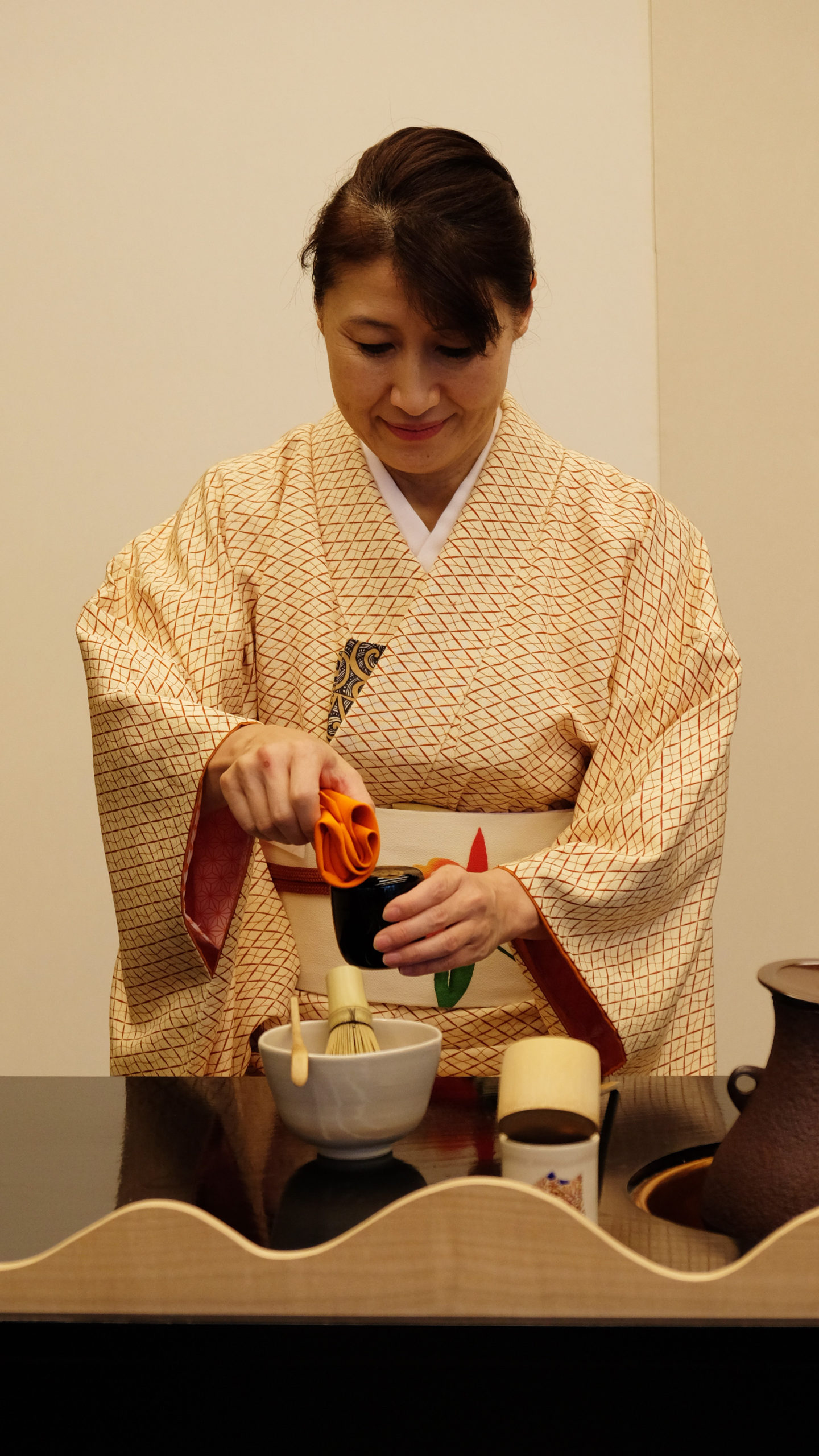October is almost the end of the autumn tea harvesting season. The last few tea leaves will be harvested in the next few days and then will come a long period of rest.
With the decreasing amount of the field work, there is more time for promotion. Many tea producing prefectures in Japan have been really proactive about promoting their tea. Several areas in Shizuoka will be collaborating with the Softbank to distribute their tea samples and expand their consumer base among young people. Shizuoka city will also be distributing tea samples through tourist facilities and its Suruga bay ferry.
Noticing the steep reduction in sales, young tea farmers in Soo city, Kagoshima have started promoting their tea through online tea parties. Iruma city in Saitama, has selected 11 students as tea ambassadors to help promote its Sayama tea. Miyazaki tea producers have also been promoting locally their pride – kamairicha (pan-fried tea) as well as their organic tea in Tokyo.
This month brought news about several new tea products and services as well. After a successful trial Wazuka town in Kyoto has launched electric car tea field tours, so if you have an opportunity to visit Wazuka, take a chance to ride it. Kyoto Prefecture Tea Research Centre is also restarting its Ujicha Academy to support the learning of the young tea business owners. The courses will start online at the end of November and will include such topics as the use of social media for business, tea export and future trends, demand for matcha after corona, and more.
In Hamamatsu city, Shizuoka, a super premium bottled green tea was released that goes for about 3,000USD. CBD has also reached Tokyo. A coffee shop in Tokyo has started selling CBD spiced coffee, tea and smoothies. And there is always room for mixing alcohol and tea. The lack of events due to the pandemic, has sharply decreased demand for beer. Refusing to give up, four beer brewers in Shizuoka came together and released 4 different tea flavoured beers: one with sencha, one with matcha, one with hojicha and the last with genmaicha.
Among the bigger news this month was, the announcement by Shizuoka University, that they scientists have developed new technology that uses DNA analysis and from a seedling can determine the amount of tea components in the leaves of a mature tea plant. Normally it takes at least 5 years for the seedlings to mature and reveal the component composition in their leaves, and another 10-15 years to determine the yield amount and resistance to cold weather and diseases. The new technology can reduce the time to just a few months and may enable the tea industry to adapt faster to the changing tea demand and weather conditions.
Other interesting news came from Urasenke – the largest tea ceremony school in Japan. On the 8th of October its leadership title was passed to Takafumi Sen (aged 30), who became the 17th leader of Urasenke tradition. The young leader was quoted by the Japanese media having said: ‘I want to keep the good points of the old days, eliminate the points that are not suitable for this era, and do it in a well-balanced manner.’
Some interesting developments are happening in the Japanese tea world and it is exciting to see what the future may bring.
*The article is based on the Japanese media articles:
- Sightseeing on an electric car in a tea town of Wazuka Kyoto, Kyoto Shimbun 2020.10.03
- Tasting Miyazaki’s specialties: A limited time shop in Takachiho, Mainichi Shimbun 2020.10.08
- Urasenke unveiled next iemoto, Mainishi Shimbun 2020.10.09
- 17th generation succession to Urasenke tea ceremony family, Kyoto Shimbun 2020.10.09
- Tea ceremony for the succession of the next Urasenke iemoto, Nikkei Shimbun 2020.10.09
- Kakegawa tea promotion at a mobile phone shop, Asahi Shimbun 2020.10.11
- Soo’s young farmers take on the challenge of “Online Tea Party” to win fans, Asahi Shimbun 2020.10.13
- Four companies and four different flavors of tea beer, Shizuoka Shimbun 2020.10.15
- 300,000 yen green tea bottle released using Tenryu tea leaves, Chunichi Shimbun 2020.10.16
- Beer smells like tea?, Mainichi Shimbun 2020.10.17
- Shizuoka city presents tea at tourist facilities and hotels, Mainichi Shimbun 2020.10.17
- Two deep-steamed tea areas aiming to raise awareness, Mainichi Shimbun 2020.10.20
- Mr. Shirao promotes organic tea cultivation in Miyazaki, attracting inquiries in the capital and other areas, Asahi Shimbun 2020.10.22
- CBD (coffee) is now available in the Shibuya, Meguro and Setagaya areas, Sankei Shimbun 2020.10.23
- Predicting functional components with tea DNA, Kyoto Shimbun 2020.10.23
- Shorter development of new varieties, predicting the composition of tea by DNA, Chunichi Shimbun 2020.10.24
- Matcha from Shizuoka for passengers on Suruga bay ferry, Nikkei Shimbun 2020.10.26
- Sayama tea PR group chose successors at tea ambassadors, Mainichi Shimbun 2020.10.26
- Ujicha Academy: Supporting the learning of the young tea business owners who will be responsible of tomorrow’s Uji tea, Sankei Shimbun 2020.10.27
- DNA analysis of tea and prediction of the amount of functional components, for efficient development of new varieties, Mainichi Shimbun 2020.10.28

